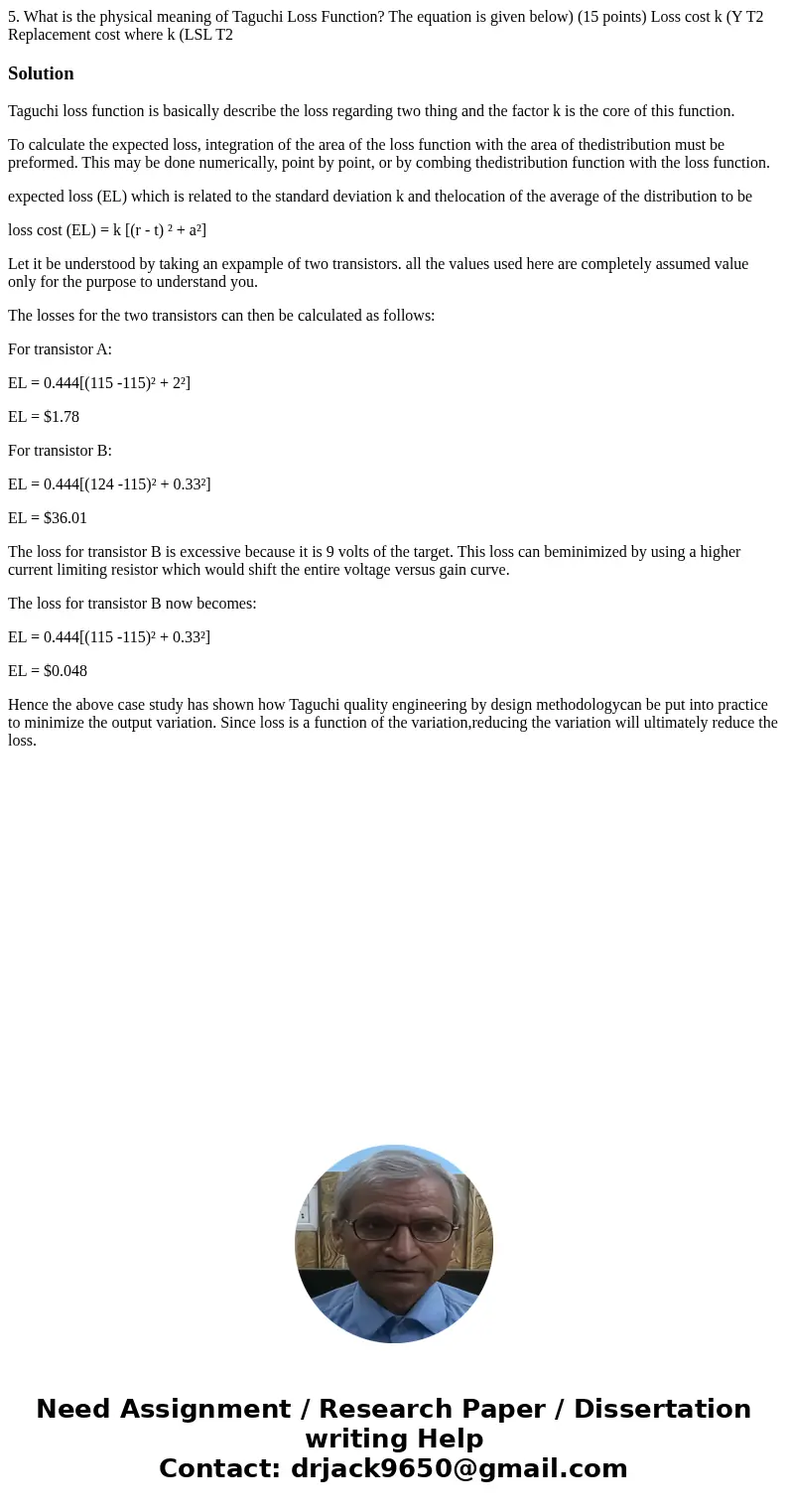5 What is the physical meaning of Taguchi Loss Function The
Solution
Taguchi loss function is basically describe the loss regarding two thing and the factor k is the core of this function.
To calculate the expected loss, integration of the area of the loss function with the area of thedistribution must be preformed. This may be done numerically, point by point, or by combing thedistribution function with the loss function.
expected loss (EL) which is related to the standard deviation k and thelocation of the average of the distribution to be
loss cost (EL) = k [(r - t) ² + a²]
Let it be understood by taking an expample of two transistors. all the values used here are completely assumed value only for the purpose to understand you.
The losses for the two transistors can then be calculated as follows:
For transistor A:
EL = 0.444[(115 -115)² + 2²]
EL = $1.78
For transistor B:
EL = 0.444[(124 -115)² + 0.33²]
EL = $36.01
The loss for transistor B is excessive because it is 9 volts of the target. This loss can beminimized by using a higher current limiting resistor which would shift the entire voltage versus gain curve.
The loss for transistor B now becomes:
EL = 0.444[(115 -115)² + 0.33²]
EL = $0.048
Hence the above case study has shown how Taguchi quality engineering by design methodologycan be put into practice to minimize the output variation. Since loss is a function of the variation,reducing the variation will ultimately reduce the loss.

 Homework Sourse
Homework Sourse